[Editor’s Note: Mad Scientist welcomes back returning guest blogger Dr. Nir Buras with today’s post. We’ve found crowdsourcing (i.e., the gathering of ideas, thoughts, and concepts from a widespread variety of interested individuals) to be a very effective tool in enabling us to diversify our thoughts and challenge our assumptions. Dr. Buras’ post takes the results from one such crowdsourcing exercise and extrapolates three future urban scenarios. Given The Army Vision‘s clarion call to “Focus training on high-intensity conflict, with emphasis on operating in dense urban terrain,” our readers would do well to consider how the Army would operate in each of Dr. Buras’ posited future scenarios…]
The challenges of the 21st century have been forecast and are well-known. In many ways we are already experiencing the future now. But predictions are hard to validate. A way around that is turning to slightly older predictions to illuminate the magnitude of the issues and the reality of their propositions.1 Futurists William E. Halal and Michael Marien’s predictions of 2011 have aged enough to be useful. In an improved version of the Delphi method, they iteratively built consensus among participants. Halal and Marien balanced the individual sense of over sixty well-qualified experts and thinkers representing a range of technologies with facilitated feedback from the others. They translated their implicit or tacit know how to make qualified quantitative empirical predictions.2
From their research we can transpose three future urban scenarios: The High-Tech City, The Feral City, and Muddling Through.
The High-Tech City
 The High-Tech City scenario is based primarily on futurist Jim Dator’s high-tech predictions. It envisions the continued growth of a technologically progressive, upwardly mobile, internationally dominant, science-guided, rich, leisure-filled, abundant, and liberal society. Widespread understanding of what works largely avoids energy shortages, climate change, and global conflict.3
The High-Tech City scenario is based primarily on futurist Jim Dator’s high-tech predictions. It envisions the continued growth of a technologically progressive, upwardly mobile, internationally dominant, science-guided, rich, leisure-filled, abundant, and liberal society. Widespread understanding of what works largely avoids energy shortages, climate change, and global conflict.3
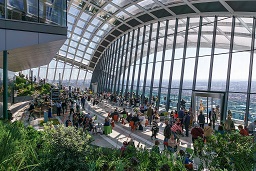 The high-tech, digital megacity is envisaged as a Dubai on steroids. It is hyper-connected and energy-efficient, powered by self-sustaining, renewable resources and nuclear energy.4
The high-tech, digital megacity is envisaged as a Dubai on steroids. It is hyper-connected and energy-efficient, powered by self-sustaining, renewable resources and nuclear energy.4
Connected by subways and skyways, with skyscraping vertical gardens, the cities are ringed by elaborately managed green spaces and ecosystems. The city’s 50 to 150-story megastructures, “cities-in-buildings,” incorporate apartments, offices, schools and grocery stores, hospitals and shopping centers, sports facilities and cultural centers, gardens, and running tracks. Alongside them rise vertical farms housing animals and crops. The rooftop garden of the 2015 film High Rise depicts how aerial terraces up high provide a sense of suburban living in the high-tech city.5
 On land, zero-emission driverless traffic zips about on intelligent highways. High-speed trains glide silently by. After dark, spider bots and snake drones automatically inspect and repair buildings and infrastructure.6
On land, zero-emission driverless traffic zips about on intelligent highways. High-speed trains glide silently by. After dark, spider bots and snake drones automatically inspect and repair buildings and infrastructure.6
In the air, helicopters, drones, and flying cars zoom around. Small drones, mimicking insects and birds, and programmable nano-chips, some as small as “smart” dust, swarm over the city into any object or shape on command. To avoid surface traffic, inconvenience, and crime, wealthier residents fly everywhere.7
Dominated by centralized government and private sector bureaucracies wielding AI, these self-constructing robotic “cyburgs” have massive technology, robotics, and nanotechnology embedded in every aspect of their life, powered by mammoth fusion energy plants.8
Every unit of every component is embedded with at least one flea-size chip. Connected into a single worldwide digital network, trillions of sensors monitor countless parameters for the city and everything in it. The ruling AI, commanded directly by individual minds, autonomously creates, edits, and implements software, simultaneously processing feedback from a global network of sensors.9
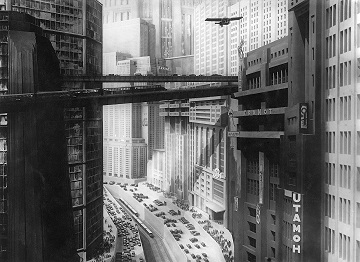
The High-Tech City is not a new concept. It goes back to Jules Verne, H. G. Wells, and Fritz Lang, who most inspired its urban look in the 1927 film Metropolis. The extrapolated growth of technology has long been the basis for predictions. But professional futurists surprisingly agree that a High-Tech Jetsons scenario has only a 0%-5% probability of being realized.10
Poignantly, the early predictors transmitted a message that the stressful lifestyle of the High-Tech City contradicts the intention of freedom from drudge. Moreover, the High-Tech megacities’ appetite for minerals may lay waste to whole ecosystems. Much of the earth may become a feral wilderness. Massive, centralized AI Internet clouds and distribution systems give a false sense of cultural robustness. People become redundant and democracy meaningless. The world may fail to react to accelerated global crises, with disastrous consequences. The paradoxical obsolescence of high-tech could slide humanity into a new Dark Age.11
The Feral City
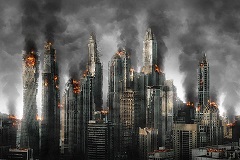 Futurists disturbingly describe a Decline to Disaster scenario as five times more likely to happen than the high-tech one. From Tainter’s theory of collapse and Jane Jacobs’s Dark Age Ahead we learn that the cycles of urban problem-solving lead to more problems and ultimately failures. If Murphy’s Law kicks in, futurists predict a 60% chance that large parts of the world may be plunged into an Armageddon-type techno-dystopian scenario, typified by the films Mad Max (1979) and Blade Runner (1982).12
Futurists disturbingly describe a Decline to Disaster scenario as five times more likely to happen than the high-tech one. From Tainter’s theory of collapse and Jane Jacobs’s Dark Age Ahead we learn that the cycles of urban problem-solving lead to more problems and ultimately failures. If Murphy’s Law kicks in, futurists predict a 60% chance that large parts of the world may be plunged into an Armageddon-type techno-dystopian scenario, typified by the films Mad Max (1979) and Blade Runner (1982).12
Apocalyptic feral cities, once vital components in national economies, are routinely imagined as vast, sprawling urban environments defined by blighted buildings. An immense petri dish of both ancient and new diseases, rule of law has long been replaced by gang anarchy and the only security available in them is attained through brute power.13
Neat suburban areas were long ago stripped for their raw materials. Daily life in feral cities is characterized by a ubiquitous specter of murder, bloodshed, and war, of the militarization of young men, and the constant threat of rape to females. Urban enclaves are separated by wild zones, fragmented habitats 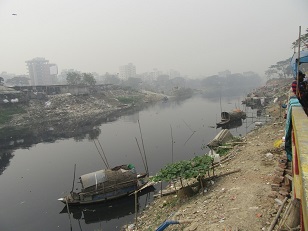 consisting of wild nature and subsistence agriculture. With minimal or no sanitation facilities, a complete absence of environmental controls, and massive populations, feral cities suffer from extreme air pollution from vehicles and the use of open fires and coal for cooking and heating. In effect toxic-waste dumps, these cities pollute vast stretches of land, poisoning coastal waters, watersheds, and river systems throughout their hinterlands.14
consisting of wild nature and subsistence agriculture. With minimal or no sanitation facilities, a complete absence of environmental controls, and massive populations, feral cities suffer from extreme air pollution from vehicles and the use of open fires and coal for cooking and heating. In effect toxic-waste dumps, these cities pollute vast stretches of land, poisoning coastal waters, watersheds, and river systems throughout their hinterlands.14
Pollution is exported outside the enclaves, where the practices of the desperately poor, and the extraction of resources for the wealthy, induce extreme environmental deterioration. Rivers flow with human waste and leached chemicals from mining, contaminating much of the soil on their banks.15
Globally connected, a feral city might possess a modicum of commercial linkages, and some of its inhabitants might have access to advanced communication and computing. In some areas, agriculture might forcefully cultivate high-yield, GMO, and biomass crops. But secure long-distance travel nearly disappears, undertaken mostly by the super-rich and otherwise powerful.16

Futurists backcasting from 2050 say that the current urbanization of violence and war are harbingers of the feral city scenario. But feral cities have long been present. The Warsaw Ghetto in World War Two was among them, as were the Los Angeles’ Watts neighborhood in the 1960s and 1990s; Mogadishu in 2003, and Gaza repeatedly.17
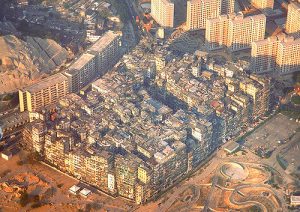
Conflict and crime changed once charming, peaceful Aleppo, Bamako, Caracas, Erbil, Mosul, Tripoli, and Salvador into feral cities. Medieval San Gimignano was one. Spectacularly, from 1889 to 1994 the ghastly spaces of Hong Kong’s singular urban phenomenon, the Walled City of Kowloon, provided a living example.18
Muddling Through
The good news is that futurists tend to believe in a 65%-85% probability of a Muddling Through scenario. Despite interlinked, cascading catastrophes, they suggest that technologies may gain some on the problems. Somehow securing a sustainable world for 9 billion people by 2050, they suggest the world will be massively changed, yet somehow livable.19
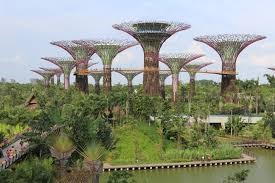 Lending credibility to the Muddling Through scenario is that it blends numerous hypotheses. It predicts that people living in rural communities will tend the land scientifically. Its technological salvation hypothesis posits that science will come to the rescue. Its free market hypothesis assumes that commerce will drive technological advancements.20
Lending credibility to the Muddling Through scenario is that it blends numerous hypotheses. It predicts that people living in rural communities will tend the land scientifically. Its technological salvation hypothesis posits that science will come to the rescue. Its free market hypothesis assumes that commerce will drive technological advancements.20
It pictures a “conserver” society tinged by Marxism, a neo-puritan “ecotopia,” colored by both the high-tech and feral scenarios. Tropical diseases, corruption, capitalism, socialism, inequality, and war are not eradicated. But nationalism, tribalism, and xenophobia are reduced after global traumas. Though measurably poorer, most people will still have a reasonable level of wellbeing.21 According to the Muddling Through scenario, large cities retract and densify around their old centers and waterfronts. Largely self-sufficient,  small towns and cities survive amid the ruins of suburban sprawl, separated by resurgent forests and fields. Shopping malls, office towers and office parks, town dumps, tract homes, and abandoned steel and glass buildings are stripped for their recyclables. Unsalvageable downtowns in some cases go feral.22
small towns and cities survive amid the ruins of suburban sprawl, separated by resurgent forests and fields. Shopping malls, office towers and office parks, town dumps, tract homes, and abandoned steel and glass buildings are stripped for their recyclables. Unsalvageable downtowns in some cases go feral.22
A mix of high and low tech fosters digital communication with those at a distance. There would be drip irrigation, hydroponic farming, aquaculture, and grey water recycling, overlaid with artificial intelligence, biotechnology and biomimicry, nuclear power, geoengineering, and oil from algae.23
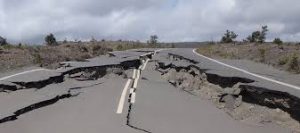 In some places, rail links are maintained, but cars are a rarity, and transportation is greatly reduced. Collapsed or dismantled freeways and bridges return to the forest or desert. While flying still exists, it is rarer. But expanded virtual mobility offering “holodeck” experiences subsumes tourism. Cosmopolitanism happens on the porch with an iPad.24
In some places, rail links are maintained, but cars are a rarity, and transportation is greatly reduced. Collapsed or dismantled freeways and bridges return to the forest or desert. While flying still exists, it is rarer. But expanded virtual mobility offering “holodeck” experiences subsumes tourism. Cosmopolitanism happens on the porch with an iPad.24
Surprisingly, the Muddling Through scenario ends up with urban fabric similar in properties to homeostatic planning had it been done intentionally. Work is a short walk from home. Corner stores pop up, as do rudimentary cafés, bistros, and other gathering places. Forty percent of the food is produced in or around cities on small farms. Wildlife returns to course freely. Groups of travelers move on surviving “high roads.” Communities meet at large sports venues situated in the countryside between them.25
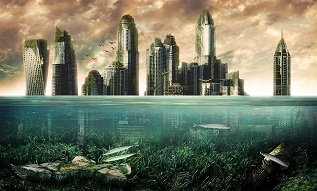 Sea level rise is met with river and sea walls. At their base, vast new coral beds and kelp forests grow over the skeletons of submerged districts and towns. In a matter of years, rivers and seas build new beaches. Their flood plains are populated with new plants. Smaller scale trade waterfronts are reactivated for shipping, and some ships are even powered by sail. Cities occupying harbors, rivers, and railroad junctions reconnect to distant supply chains, mostly for non-quotidian (i.e., luxury) goods.26
Sea level rise is met with river and sea walls. At their base, vast new coral beds and kelp forests grow over the skeletons of submerged districts and towns. In a matter of years, rivers and seas build new beaches. Their flood plains are populated with new plants. Smaller scale trade waterfronts are reactivated for shipping, and some ships are even powered by sail. Cities occupying harbors, rivers, and railroad junctions reconnect to distant supply chains, mostly for non-quotidian (i.e., luxury) goods.26
Learning from Rome to Understand Detroit
Rome’s deterioration from a third century city of more than 1,000,000 people started long before it was acknowledged. An unnoticed population drop to 800,000 was characterized by ever larger buildings of decreasing beauty and craft, including the huge Baths of Diocletian (298-306 CE). Anticipating barbarian invasion, Rome’s walls were built (271-275 CE). It was ransacked twice (410 and 455 CE).27
But as if in a dream, 5th century life of the diminishing but still substantial population continued as normal. Invading Goths maintained Rome’s Senate, taxes, and cops. But administrative and military infrastructure vaporized. An unraveling education system led to the rise of illiteracy. Noble families began using mob politics, economic and social linkages broke down, travel and transportation became unsafe, and manufacturing collapsed.28

By 500 CE, Rome had less than 100,000 people. Systematic agriculture disappeared, and much land returned to forest. The Pope and nobility pillaged abandoned public buildings for their materials. The expansive city was reduced to small groups of inhabited buildings, interspersed among large areas of abandoned ruins and overgrown vegetation. In the 12th and 13th centuries the population of Rome was possibly as few as 20,000 people.29
The long journey from first cities, to Ancient Greece, Rome, and the Middle Ages, through Paris, Washington, and Shanghai, helps us understand how our cities might end up. Holding Rome up to the mirrors of history reads like backcasting Rome’s decline and survival in a Muddling Through scenario from today’s view. Halal predicted that muddling would start about 2023 to 2027 and that if we weren’t muddling by then, collapse would set in by 2029.30
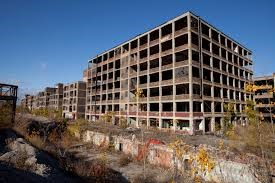 Detroit started muddling in 1968. New York proved to be a fragile city during blackouts, as did Dubai in its 2009 financial crisis. Since the 1970s, most of America’s ten “dead cities,” many formerly among its largest and most vibrant, came disturbingly close to being feral. The overlapping invisibilities of heavily armed warlords and brutal police, make the favelas of Medellin and Rio de Janeiro virtually feral.31
Detroit started muddling in 1968. New York proved to be a fragile city during blackouts, as did Dubai in its 2009 financial crisis. Since the 1970s, most of America’s ten “dead cities,” many formerly among its largest and most vibrant, came disturbingly close to being feral. The overlapping invisibilities of heavily armed warlords and brutal police, make the favelas of Medellin and Rio de Janeiro virtually feral.31
Today we are at a tipping point. We can wait for the collapse of systems to reach homeostasis or attain it intentionally by applying Classic Planning principles.32
If you enjoyed this post, please also see Dr. Buras’ other posts:
Nir Buras is a PhD architect and planner with over 30 years of in-depth experience in strategic planning, architecture, and transportation design, as well as teaching and lecturing. His planning, design and construction experience includes East Side Access at Grand Central Terminal, New York; International Terminal D, Dallas-Fort-Worth; the Washington DC Dulles Metro line; work on the US Capitol and the Senate and House Office Buildings in Washington. Projects he has worked on have been published in the New York Times, the Washington Post, local newspapers, and trade magazines. Buras, whose original degree was Architect and Town planner, learned his first lesson in urbanism while planning military bases in the Negev Desert in Israel. Engaged in numerous projects since then, Buras has watched first-hand how urban planning impacted architecture. After the last decade of applying in practice the classical method that Buras learned in post-doctoral studies, his book, *The Art of Classic Planning* (Harvard University Press, 2019), presents the urban design and planning method of Classic Planning as a path forward for homeostatic, durable urbanism.
1 Population growth, clean water, compromised resilience of infrastructures, drug-resistant microbes, pandemics, possible famine, authoritarian regimes, social breakdowns, terrestrial cataclysms, terrorist mischief, nuclear mishaps, perhaps major war, education and healthcare collapse, climate change, ecological devastation, biodiversity loss, ocean acidification, world confusion, institutional gridlock, failures of leadership, failure to cooperate. Sources include: Glenn, Jerome C., Theodore J. Gordon, Elizabeth Florescu, 2013-14 State of the Future Millennium Project: Global Futures Studies and Research, Millennium-project.org (website), Washington, DC, 2014; Cutter, S. L. et al., Urban Systems, Infrastructure, and Vulnerability, in Climate Change Impacts in the United States: The Third National Climate Assessment, in Melillo, J. M. et al., (eds.), U.S. Global Change Research Program, 2014, Ch. 11, pp. 282-296; Kaminski, Frank, A review of James Kunstler’s The Long Emergency 10 years later, Mud City Press (website), Eugene, OR, 9 March 2015; Urban, Mark C., Accelerating extinction risk from climate change, Science Magazine, Vol. 348, Issue 6234, 1 May 2015, pp. 571-573; Kunstler, J.H., Clusterfuck Nation: A Glimpse into the Future, Kunstler.com (website), 2001b; US Geological Survey, Materials Flow and Sustainability, Fact Sheet FS-068-98, June 1998; Klare, M. T., The Race for What’s Left, Metropolitan Books, New York, 2012; Drielsma, Johannes A. et al., Mineral resources in life cycle impact assessment – defining the path forward, International Journal of Life Cycle Assessment, 21 (1), 2016, pp. 85-105; Meinert, Lawrence D. et al., Mineral Resources: Reserves, Peak Production and the Future, Resources 5(14), 2016; OECD World Nuclear Agency and International Atomic Energy Agency, 2004; Tahil, William, The Trouble with Lithium Implications of Future PHEV Production for Lithium Demand, Meridian International Research, 2007; Turner, Graham, Cathy Alexander, Limits to Growth was right. New research shows we’re nearing collapse, Guardian, Manchester, 1 September 2014; Kelemen, Peter, quoted in Cho, Renee, Rare Earth Metals: Will We Have Enough?, in State of the Planet, News from the Earth Institute, Earth Institute, Columbia University, September 19, 2012; Griffiths, Sarah, The end of the world as we know it? CO2 levels to reach a ‘tipping point’ on 6 June – and Earth may never recover, expert warns, Daily Mail, London, 12 May 2016; van der Werf, G.R. et al., CO2 emissions from forest loss, Nature Geoscience, Volume 2, November 2009, pp. 737–738; Global Deforestation, Global Change Program, University of Michigan, January 4, 2006; Arnell, Nigel, Future worlds: a narrative description of a plausible world following climate change, Met Office, London, 2012; The End, Scientific American, Special Issue, Sept 2010; Dator, Jim, Memo on mini-scenarios for the pacific island region, 3, November, 1981b, quoted in Bezold, Clement, Jim Dator’s Alternative Futures and the Path to IAF’s Aspirational Futures, Journal of Futures Studies, 14(2), November 2009, pp. 123 – 134.
2 Halal, William, Through the megacrisis: the passage to global maturity, Foresight Journal, VOL. 15 NO. 5, 2013a, pp. 392-404; Halal, William E., and Michael Marien, Global MegaCrisis Four Scenarios, Two Perspectives, The Futurist, Vol. 45, No. 3, May-June 2011; Halal, William E., Forecasting the technology revolution: Results and learnings from the TechCast project, Technological Forecasting and Social Change, 80.8, 2013b, pp. 1635-1643; TechCast Project, George Washington University, TechCast.org (website), Washington, DC, N.D.; National Research Council, Persistent Forecasting of Disruptive Technologies—Report 2, The National Academies Press, Washington, DC,2010. Halal, William E., Technology’s Promise: Expert Knowledge on the Transformation of Business and Society, Palgrave Macmillan, London, 2008; Halal et al., The GW Forecast of Emerging Technologies, Technology Forecasting & Social Change, Vol. 59, 1998, pp. 89-110. The name was inspired by the oracle at Delphi (8th century BCE to 390 CE). The modern Delphi Method helps uncover data, and collect and distill the judgments of experts using rounds of questionnaires, interspersed with feedback. Each round is developed based on the results of the previous, until the research question is answered, a consensus is reached, a theoretical saturation is achieved, or sufficient information was exchanged. Linstone, Harold A., & Murray Turoff (eds.), The Delphi method: Techniques and applications, Addinson-Wesley, London, 1975; Halal, William E., Business Strategy for the Technology Revolution: Competing at the Edge of Creative Destruction, Journal of Knowledge Economics, Springer Science+Business Media, New York, September 2012. The author consolidated both of Halal and Marien muddling scenarios into one. The uncertainty of each particular forecast element was about 20% – 30 %.
3 Dator, James, Advancing Futures, Westport: Ct, Praeger, 2002; Bezold, 2009.
4 Chan, Tony, in Reubold, Todd, Envision 2050: The Future of Cities, Ensia.com (website), 16 June, 2014; Kunstler, James Howard, Back to the Future, Orion Magazine, June 23, 2011. Urry, John et al., Living in the City, Foresight, Government Office for Science, London, 2014; Hoff, Mary, Envision 2050: The Future of Transportation, Ensia.com (website), 31 March, 2014.
5 Kaku, Michio, The World in 2100, New York Post, New York, 20 March 2011. Tonn, Bruce E., LeCorbusier Meets the Jetsons in Anytown U.S.A. in the Year 2050: Glimpses of the Future, Planning Forum, Community and, Regional Planning, Volume 8, School of Architecture, The University of Texas, Austin, 2002; Urry et al., 2014.
6 Kaku, 2011; Hon, 2016. Rubbish bins will send alarms when they are about full. Talking garbage bins will reward people with poems, aphorisms, and songs for placing street rubbish in the bin. Heinonen, 2013.
7 Urry et al., 2014.
8 Heinonen, 2013. The prefix cy*, an abbreviation of cybernetics, relates to computers and virtual reality. The suffix *burg means city, fortified town. Urrutia, Orlando, Eco-Cybernetic City of the Future, Pacebutler.com (website), 12 February 2010; Tonn, 2002.
9 Shepard, M., Sentient City: Ubiquitous Computing, Architecture, And The Future of Urban Space. MIT Press, Cambridge, 2011; Kurzweil, Ray, The Singularity is Near, Penguin Group, New York, 2005. Some futurists predict that the energy required to keep a “global brain” operating may so deplete energy that it will bankrupt society and cause total collapse. Heinonen, 2013. The terms smart city, intelligent city, and digital city are sometimes synonymous, but the digital or intelligent city is considered heavily technological. Heinonen, 2013; Giffinger, Rudolf et al., Smart cities – Ranking of European medium-sized cities. Centre of Regional Science, Vienna UT, October 2007; Kaku, 2011; Vermesan, Ovidiu and Friess, Peter, Internet of Things: Converging Technologies for Smart Environments and Integrated Ecosystems, River Publishers, Aalborg DK, 2013; Cooper, G., Using Technology to Improve Society, The Guardian, Manchester, 2010; Heinonen, 2013. Typical smart city programs utilize traffic data visualization, smart grids, smart water and e-government solutions, The Internet, smartphones, inexpensive sensors, and mobile devices. Amsterdam, Dubai, Cairo, Edinburg, Malaga, and Yokohama have smart city schemes. Webb, Molly et al., Information Marketplaces: The New Economics of Cities, The Climate Group, ARUP, Accenture and The University of Nottingham, 2011.
10 Dator, 2002; Bezold, 2009. The Jetsons originally ran a single season in 1962-63. It was revived but not resuscitated in 1985. The term Jetsons today stands for “unlikely, faraway futurism.” Novak, Matt, 50 Years of the Jetsons: Why The Show Still Matters, Smithsonian.Com, 19 September 2012.
11 Perrow, Charles, Normal Accidents: Living with High-Risk Technologies, Basic Books, New York, 1984. By adding complexity, including conventional engineering warnings, precautions, and safeguards, systems failure not only becomes inevitable, but it may help create new categories of accidents, such as those of Bhopal, the Challenger disaster, Chernobyl, and Fukushima. Deconcentrating high-risk populations, corporate power, and critical infrastructures is suggested. Perrow, Charles, The Next Catastrophe: Reducing Our Vulnerabilities to Natural, Industrial, and Terrorist Disasters, Princeton University Press, Princeton, 2011; Turner, 2014; Jacobs, Jane, Dark Age Ahead, Random House, New York, 2004, p.24.
12 Jacobs, 2004; Dirda, Michael, A living urban legend on the sorry way we live now, Washington Post, Washington DC, 6 June, 2004; Dator, 2002; Bezold, 2009; Dator, James, Alternative futures & the futures of law, in Dator, James & Clement Bezold (eds.), Judging the future, University of Hawaii Press, Honolulu, 1981. pp.1-17; Halal, 2013b.
13 The term feral city was coined in Norton, Richard J., Feral Cities, Naval War College Review, Vol. LVI, No. 4, Autumn 2003. See also Brunn, Stanley D. et al., Cities of the World: World Regional Urban Development, Rowman & Littlefield, Lanham, MD, 2003, pp. 5–14, chap. 1.
14 Norton, 2003.
15 Urry, J., Offshoring. Polity, Cambridge, 2014; Gallopin, G., A. Hammond, P. Raskin, R. Swart, Branch Points, Global Scenario Group, Stockholm Environment Institute, Stockholm, 1997, p. 34. Norton, 2003.
16 Tonn, 2002; Urry et al., 2014.
17 Backcasting is future hindsight. Kilcullen, David, Out of the Mountains: The Coming Age of the Urban Guerrilla, Oxford University Press, Oxford, 2013.
18 Heterotopia, in Foucault, Michel, The Order of Things, Vintage Books, New York, 1971; Foucault, M., Of Other Spaces, Diacritics 16, 1986, pp. 22-27. Girard, Greg, and Ian Lambot, City of Darkness: Life in Kowloon Walled City, Watermark, Chiddingfold, 1993, 2007, 2014; Tan, Aaron Hee-Hung, Kowloon Walled City: Heterotopia in a Space of Disappearance (Master’s Thesis), Harvard University, Cambridge, MA, 1993; Sinn, Elizabeth, Kowloon Walled City: Its Origin and Early History (PDF). Journal of the Hong Kong Branch of the Royal Asiatic Society, 27, 1987, pp. 30–31; Harter, Seth, Hong Kong’s Dirty Little Secret: Clearing the Walled City of Kowloon, Journal of Urban History 27, 1, 2000, pp. 92-113; Grau, Lester W. and Geoffrey Demarest, Diehard Buildings: Control Architecture a Challenge for the Urban Warrior, Military Review, Combined Arms Center, Fort Leavenworth, Kansas, September / October 2003; Kunstler, James Howard, A Reflection on Cities of the Future, Energy Bulletin, Post Carbon Institute, 28 September, 2006; ArenaNet Art Director Daniel Dociu wins Spectrum 14 gold medal!, Guild Wars.com (website), 9 March 2007. Authors, game designers, and filmmakers used the Walled City to convey a sense of feral urbanization. It was the setting for Jean-Claude Van Damme’s 1988 film Bloodsport; Jackie Chan’s 1993 film Crime Story was partly filmed there during among genuine scenes of building demolition; and the video game Shadowrun: Hong Kong features a futuristic Walled City. Today the location of the former Kowloon Walled City is occupied by a park modelled on early Qing Dynasty Jiangnan gardens.
19 Halal, 2013a; Wright, Austin Tappan, Islandia, Farrar & Rinehart, New York, Toronto, 1942; Tonn, Bruce E., Anytown U.S.A. in the Year 2050: Glimpses of the Future, Planning Forum, Community and, Regional Planning, Volume 8, School of Architecture, The University of Texas, Austin, 2002; Porritt, Jonathon, The World We Made: Alex McKay’s Story from 2050, Phaidon Press, London, 2013. World Made by Hand novels by James Howard Kunstler: World Made By Hand, Grove Press, New York, 2008; The Witch of Hebron, Atlantic Monthly Press, 2010; A History of the Future, Atlantic Monthly, 2014; The Harrows of Spring, Atlantic Monthly Press, 2016
20 Turner, 2014.
21 Dator, 2002; Bezold, 2009; Dator & Bezold, 1981; Dator, 1981a; Dator, 1981b; Dator, James, The Unholy Trinity, Plus One (Preface), Journal of Futures Studies, University of Hawaii, 13(3), February 2009, pp. 33 – 48; McDonough, William & Michael Braungart, Cradle to Cradle: Remaking the Way We Make Things, Macmillan, New York, 2002; Porritt, 2013; Urry et al., 2014.
22 Wright, 1942; Kunstler, 2011; Givens, Mark, Bring It On Home: An Interview with James Howard Kunstler, Urban Landscapes and Environmental Psychology, Mung Being (website), Issue 11, N.D., p. 30; Kunstler, World Made by Hand series.
23 Tonn, 2002; Mollison, B. C. Permaculture: A Designer’s Manual. Tagari Publications, Tyalgum, Australia, 1988; Holmgren, D. and B. Mollison, Permaculture One, Transworld Publishers, Melbourne, 1978; Holmgren, D., Permaculture: Principles and Pathways beyond Sustainability, Holmgren Design Services, Hepburn, Victoria, Australia, 2002; Holmgren, David, Future Scenarios: How Communities Can Adopt to Peak Oil and Climate Change, Chelsea Green Publishing White River Junction, Vermont, 2009; Walker, L., Eco-Village at Ithaca: Pioneering a Sustainable Culture, New Society Publishers, Gabriola Island, 2005; Hopkins, R., The Transition Handbook: From Oil Dependency to Local Resilience, Green Books, Totnes, Devon, 2008; Urry et al., 2014; Porritt, 2013.
24 Urry et al., 2014; Porritt, 2013; Caletrío, Javier, “The world we made. Alex McKay’s story from 2050” by Jonathon Porritt (review), Mobile Lives Forum, forumviesmobiles.org (website), 21 May 2015.
25 Kunstler, 2001b.
26 Kunstler, 2006; Williams, 2014.
27 Krautheimer, Richard, Rome: Profile of A City, 312-1308, Princeton University Press, Princeton, 1980.
28 Palmer, Ada, The Shape of Rome, exurbe.com (website), Chicago, 15 August 2013.
29 Procopius of Caesarea, (c.490/507- c.560s) Procopius, Dewing, H B., and Glanville Downey (trans), Procopius, Harvard University Press, Cambridge, MA, 2000.On the Wars in eight books (Polemon or De bellis) was published 552, with an addition in 554; Storey, Glenn R., The population of ancient Rome, Antiquity, December 1, 199; Wickham, Chris, Medieval Rome: Stability and Crisis of a City, 900-1150, Oxford Studies in Medieval European History, Oxford University Press, New York, Oxford, 2015. Population numbers are uncertain well into the Renaissance. Krautheimer, 1980.
30 Porritt, 2013; Alexander, Samuel, Resilience through Simplification: Revisiting Tainter’s Theory of Collapse, Simplicity Institute Report, Melbourne (?), 2012b; Palmer, 2013: Halal, 2013a, 2013b.
31 America’s “Ten Dead Cities” in 2010: Buffalo; Flint; Hartford; Cleveland; New Orleans; Detroit; Albany; Atlantic City; Allentown, and Galveston. McIntyre, Douglas A., America’s Ten Dead Cities: From Detroit to New Orleans, 24/7 Wall Street (website), 23 August, 2010; Gibson, Campbell, Population of The 100 Largest Cities And Other Urban Places In The United States: 1790 To 1990, Population Division, U.S. Bureau of the Census, Washington, DC, June 1998. See also “America’s 150 forgotten cities.” Hoyt, Lorlene and André Leroux, Voices from Forgotten Cities Innovative Revitalization Coalitions in America’s Older Small Cities, MIT, Cambridge, MA, 2007; Manaugh, Geoff, Cities Gone Wild, Bldgblog.com (website), 1 December 2009.
32 Buras, Nir, The Art of Classic Planning for Beautiful and Enduring Communities, Harvard University Press, Cambridge, 2019.

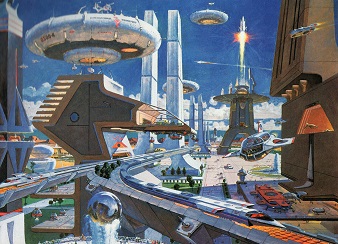


Teh “High Rise” movie has a counter part in a post man made climate disaster future movie called “Snowpiercer” https://www.imdb.com/title/tt1706620/.
The “Feral City” aspect has already been explored in writer John Wagner and artist Carlos Ezquerra’s “Judge Dredd” comic with its “Megacity One” (which covers most of the east coast of North America and automation has put most people out of work) requiring the evolution of the Supreme Court to change cops to judges meting out justice on the spot and has resulted in the judge system becoming the worldwide political model https://en.wikipedia.org/wiki/Judge_Dredd